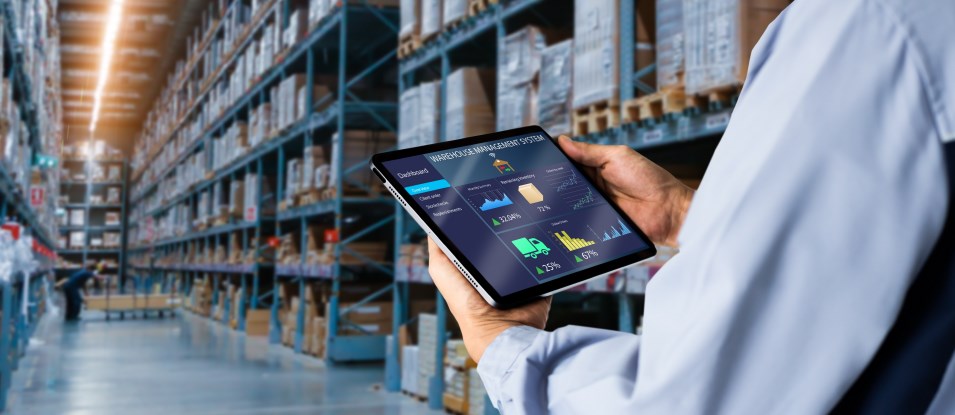What is Logistics Management?
From the point a product is manufactured to when it reaches the end customer, there are many interlinked logistics processes involved within. Logistics management refers to management of all these processes and activities. It includes the process of creating a plan, implementing it, and establishing control over logistic operations through it.
Logistics management also involves integration of activities such as security, packaging, material handling, warehousing, inventory management and transportation of products. The main goal of logistics management is ensuring that the products/goods are delivered to customers at the right time, right place and in the best condition.
All of this is done while making sure that the operational efficiency is maximized and costs are minimal. These goals are achieved by optimizing the supply chain so as there’s an ideal balance between cost-effectiveness and customer satisfaction. For overall supply chain efficiency, logistics management is an integral element.
Different Types of Logistic Management
There are multiple logistics linked with different processes of the supply chain. To understand logistics management, it’s important to have an idea of its various types. Following are some of the commonly preferred types of logistics management:
Supply Management
Supply management refers to planning, implementing, and coordinating materials required for production, ensuring that they are present at the right place and at the right time. This management process also includes taking care of materials’ transportation and storage. Moreover, it also involves the evaluation of demand, to manage levels of supply, in order to keep the overall supply chain streamlined. Time efficiency is required in supply management as any delay could result in disruption in the overall supply chain.
Distribution And Material Handling
Under this head, the major focus process is the movement of the finished products or raw materials from manufacturing to distribution or supplier to manufacturing. In this type of logistics management, activities range from loading and unloading to tracking, and storage of products. It helps establish control over the movements of supplies from the central storage/processing unit to multiple locations. With this type of logistics management, on-time delivery of supplies can be ensured so that production and distribution levels are maintained.
Product Management
Product management is a type of logistics management that takes care of planning, control, and management of different levels/stages of manufacturing within an organization. The major goal of this management is to achieve capital efficiency. It is done by establishing proper coordination in manufacturing and assembling supply chain processes. Its other responsibilities include the management of movements between warehouses and factories, evaluation of schedules, and management of manufacturing spaces.
Customer Service Management
Customer service management is an important type of logistics management that uses technologies, strategies, and practices to analyze and manage customer data and interactions throughout their purchase cycle. Customer service is key to customer satisfaction, which in turn helps win customers’ loyalty. The main goal of customer service management is to improve communication with customers and support them throughout their shopping journey. Nevertheless, CSM helps businesses boost customer retention while creating long-lasting relationships with them.
Major Components of Logistics Management
Logistics management is a lengthy and complex process that involves its multiple sub-processes. Thus, to understand logistics management, it’s important to familiarize with its components. This type of supply chain management is comprised of:
Inventory Planning
Inventory planning refers to the creation of plans to maintain ideal stock levels so that customer demand can be met while reducing the chances of out-of-stock situations. It aims at maintaining the inventory levels in such a way that other related costs like storages, transit, etc remains at minimum.
Inbound Logistics
Inbound logistics refers to the transportation and storage of goods by its parent business. Using inbound logistics, businesses can manufacture products with the highest quality, avoid material wastage, and reduce overhead costs. This component of logistics management is derived from a healthy relationship between a business and its supplier.
Outbound Logistics
Outbound logistics is when the transportation of finished goods from the manufacturing unit and warehouse to the end customer. The stages of outbound logistics include last-minute delivery, transportation, distribution, storage, and warehousing. Overall, this component of logistics management deals with delivering finished products to end consumers.
Fleet Management
Fleet management refers to the management of vehicles that are used in the transportation of goods from one end to another. Its management reduces or eliminates the risk that comes with transportation of goods. With fleet management, businesses can achieve efficiency in overall transportation while keeping the associated costs low.
Final Words
For businesses that deal in manufacturing, distribution or direct sale of goods, it’s important to have a well-established logistics management system. Logistics management can help organizations improve overall customer satisfaction, all while saving on logistics costs. In addition, it’s also a key element in boosting the overall supply chain. Therefore, for overall business growth, implement logistics management now!






